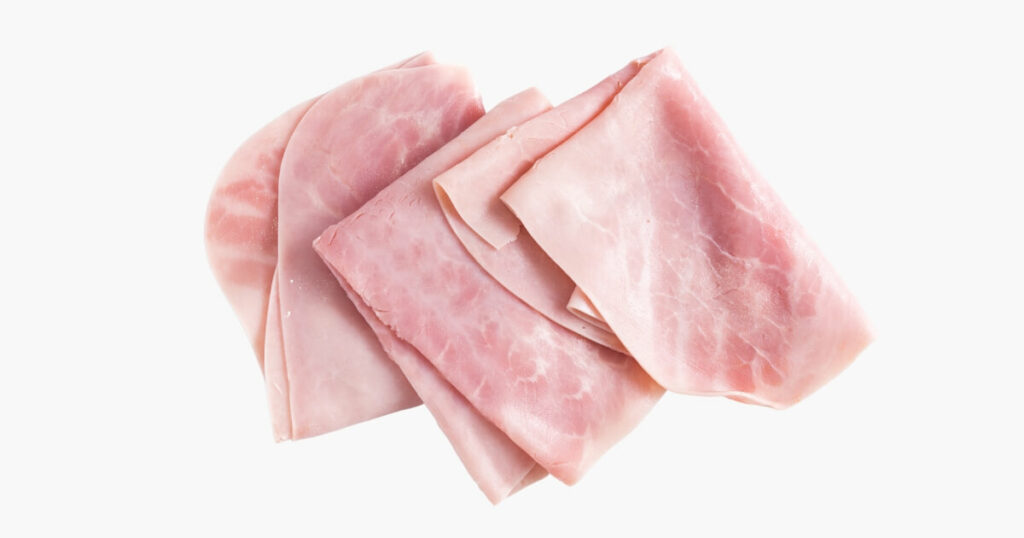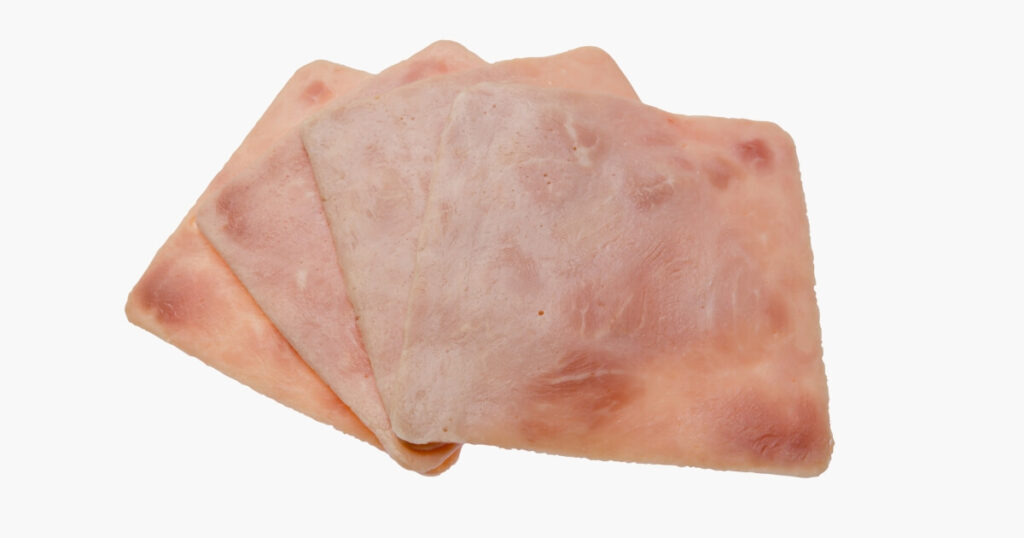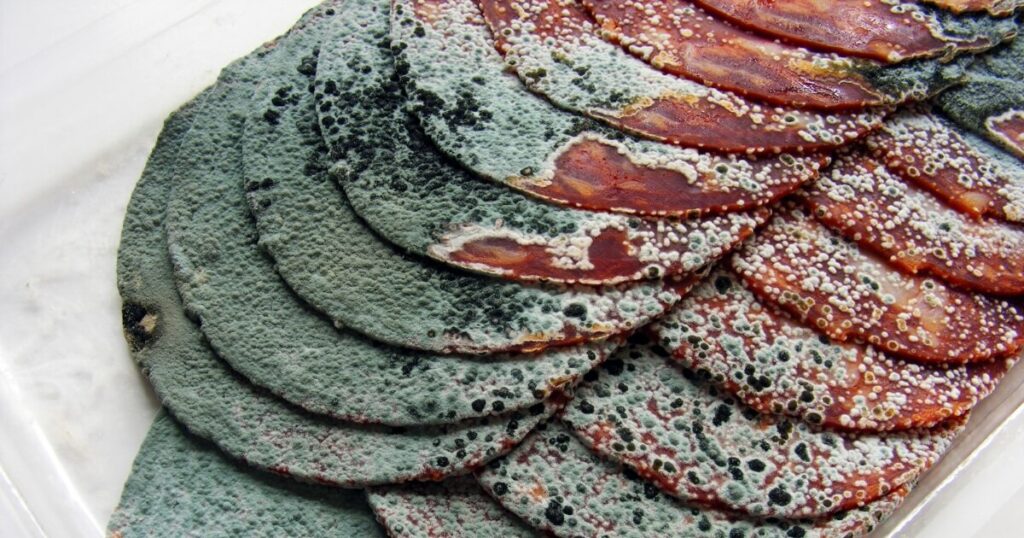Deli meat is the unsung hero of quick lunches and impromptu picnics. Whether you’re whipping up a classic bologna and mustard or turkey and cheese sandwich or adding some ham to your morning omelet, these slices have your back.
But there comes a time when you have to ask, “Is this still good, or has it gone bad?”

Fresh deli meat should have a vibrant color, feel moist but not slimy, and have a meaty aroma. If it’s turning grayish-brown, feels sticky, has signs of mold, or has an off-putting smell, it’s time to toss it.
We’ve all been there, staring at a pack of roast beef, wondering if it’s safe to eat or if it’s time to bid it farewell.
In this guide, I’ll walk you through the telltale signs that your deli meat might be past its prime or has spoiled. So, before you make that next sandwich, let’s see if we can uncover what’s happening with your cold cuts.
How To Know If Deli Meat Is Bad
Here’s a quick overview of the differences between fresh deli meat and spoiled meat slices.
What Does Fresh Deli Meat Look Like:

- Vibrant color, typically pink or red for beef, white for turkey, and pink for ham.
- Feels moist but not too wet or slimy to the touch.
- Has a fresh, meaty aroma without any sour or off-putting smells.
- Tastes savory, slightly salty, and true to its specific type, be it turkey, ham, or roast beef.
What Does Spoiled Deli Meat Look Like:

- Discoloration, turning grayish-brown, greenish, or showing dark spots or mold.
- Feels slimy or sticky when touched.
- Presence of a sour smell, ammonia-like, or any other unusual odor.
- Tastes sour, off, or just not as it should.
If you’re wondering just how long you’ve got before it goes from fresh and delicious to something a bit more questionable, have a peek at my guide “how long does fresh deli meat last.”
Here is a closer look at the signs of spoilage you might encounter!
Change in Color
Fresh deli meat should have a consistent, vibrant color that’s characteristic of its type. Whether it’s the pink hue of ham or the white of turkey, the color indicates its freshness.
But over the years, I’ve noticed that when my deli meat starts to look a bit off, it’s time to give it a closer inspection.
Grayish-brown, greenish tints or even dark spots aren’t what you want to see when making a sandwich.

Now, why does this happen? Well, there are a few culprits. Oxidation is one of them. Just like how an apple turns brown when left out, deli meat can change color when exposed to air.
And then there’s frozen lunch meat. You might have noticed some discoloration if you’ve ever found an old pack of lunch meat buried deep in your freezer. That’s freezer burn for you. It might not be harmful, but it sure doesn’t do any favors for the taste.
But what does this all mean for you and that sandwich you’re about to make?
Well, a change in color, especially when paired with other signs like an off smell, is a big red flag. It suggests that the meat might not be safe to eat.
If the color seems off, it’s best to trust your instincts, throw it out, and opt for something else.
Off-Putting Smell
Deli meat should have a fresh, meaty smell that’s appetizing and inviting. If you’re getting a whiff of something sour, ammonia-like, or just plain unusual, it clearly indicates that you should avoid eating it.
So, what’s behind this bad smell? Bacterial growth is a major factor.
When bacteria start to multiply on the meat, they produce waste products that give off these strong odors. And it’s not just from letting it sit out on the counter. Even in the fridge, bacteria can thrive if given enough time.
Another cause is the breakdown of proteins in the meat. As the proteins degrade, they can release compounds that have a distinct smell.
I remember a time I tried to save some money by buying sandwich meats in bulk. I individually wrapped portions in plastic wrap and placed them in an air-tight container. I thought I’d eat it over a couple of weeks, but the smell had changed by the end of the first week. It wasn’t rotten, but it wasn’t fresh either.
Now, why should you care about the smell? Well, bad-smelling meat isn’t just unappetizing. It can be downright dangerous!
So, the next time you’re about to use some deli meat, give it a good sniff. If it doesn’t smell right, it’s best to skip it. Your stomach will thank you!
Slimy or Sticky Film
The feel of your meat can be just as revealing as its appearance or smell. If you’ve ever reached into a pack and felt a slimy or sticky film on the meat, you know it’s not a good sign.
Why does lunch meat get slimy? The sliminess is often due to bacterial waste products. As bacteria grow and multiply on the meat, they produce waste that can give the meat this slick feel.
Now, why is this sliminess a concern? Well, it’s a clear sign of spoilage. Consuming slimy meat can expose you to harmful bacteria that can lead to stomach upsets or worse.
Mold on Deli Meat
Those fuzzy, sometimes colorful spots of mold are nature’s way of telling you that your deli meat is no longer safe to consume.

I’ve seen mold pop up now and then, especially when I’ve lost track of how long something’s been in the fridge. And while some foods, like certain cheeses, are meant to have mold, deli meat is definitely not one of them.
What causes mold to appear on deli meat? Mold spores are everywhere, and they’ll happily grow given the right conditions, moisture, warmth, and a food source.
Again, the implications of mold on deli meat are straightforward: it’s not safe to eat.
Consuming moldy meat can lead to stomach upsets and other health issues. If you ever spot mold on your deli meat, discarding it is the best course of action. It’s not worth the risk of trying to salvage a slice or two.
And remember, it’s always a good idea to store deli meat properly and consume it within its recommended time frame. That way, you can enjoy your meals without any unwelcome surprises.
Past Its Date
The “best by date” on the package isn’t just a casual recommendation. It indicates when the meat is at its peak in terms of safety and taste.
While the “best-by” date gives you an idea of when the product is at its best flavor and quality, the “sell-by” date is a guide for retailers. It indicates the last day the product should be sold, giving you a buffer to consume it while it’s still safe.
While it might be tempting to use deli meat a few days after this date, especially if it looks and smells fine, doing so can be risky.
Bologna and hard salami might seem like they last forever, but they have their limits. Even these meats, known for their longer shelf life, can become dangerous if consumed too long after their recommended date.
So, when you’re reaching for that pack of turkey or pastrami, always check the date and for signs of spoilage.
Warm to the Touch
Whether it’s fresh from the deli counter or pulled from your fridge, your meat should always feel cold to the touch. If you ever grab a slice and it feels warm, that’s a sign that something’s not right.
So, what causes deli meat to feel warm? More often than not, it’s due to improper storage.
The implications of warm deli meat go beyond just a change in texture or taste. When meat is warm, it provides an ideal environment for bacteria to grow and multiply. Eating that meat can expose you to harmful bacteria, leading to stomach upsets or worse.
If you ever come across deli meat that feels warm, and you don’t know how long it’s been that way, it’s a good idea to play it safe and toss it and opt for something else.
What Happens If You Eat Bad Lunch Meat?
So, what’s the big deal if you ate 2-week-old deli meat? Well, it could be a gamble with your health. Even seemingly good lunch meat might be dangerous.
Some dangers, like the bacteria listeria, lurk unseen. Even if the meat looks and smells fine, there’s no guarantee it’s free from harmful bacteria, especially if it’s been stored improperly or for too long.
What’s behind these invisible threats? Bacterial contamination is the primary culprit.
Listeria outbreaks linked to deli meats are a stark reminder that they can thrive in environments where deli meats are often stored.
Listeria can cause severe foodborne illnesses. I’ve heard stories of people getting severely sick from consuming contaminated food, and it’s not something to take lightly.
Symptoms can range from mild stomach upsets to more severe conditions, especially in vulnerable groups like pregnant women or the elderly. While it might be tempting to use that last slice, it’s always better to be safe than sorry. After all, no sandwich or salad is worth the risk of food poisoning.











